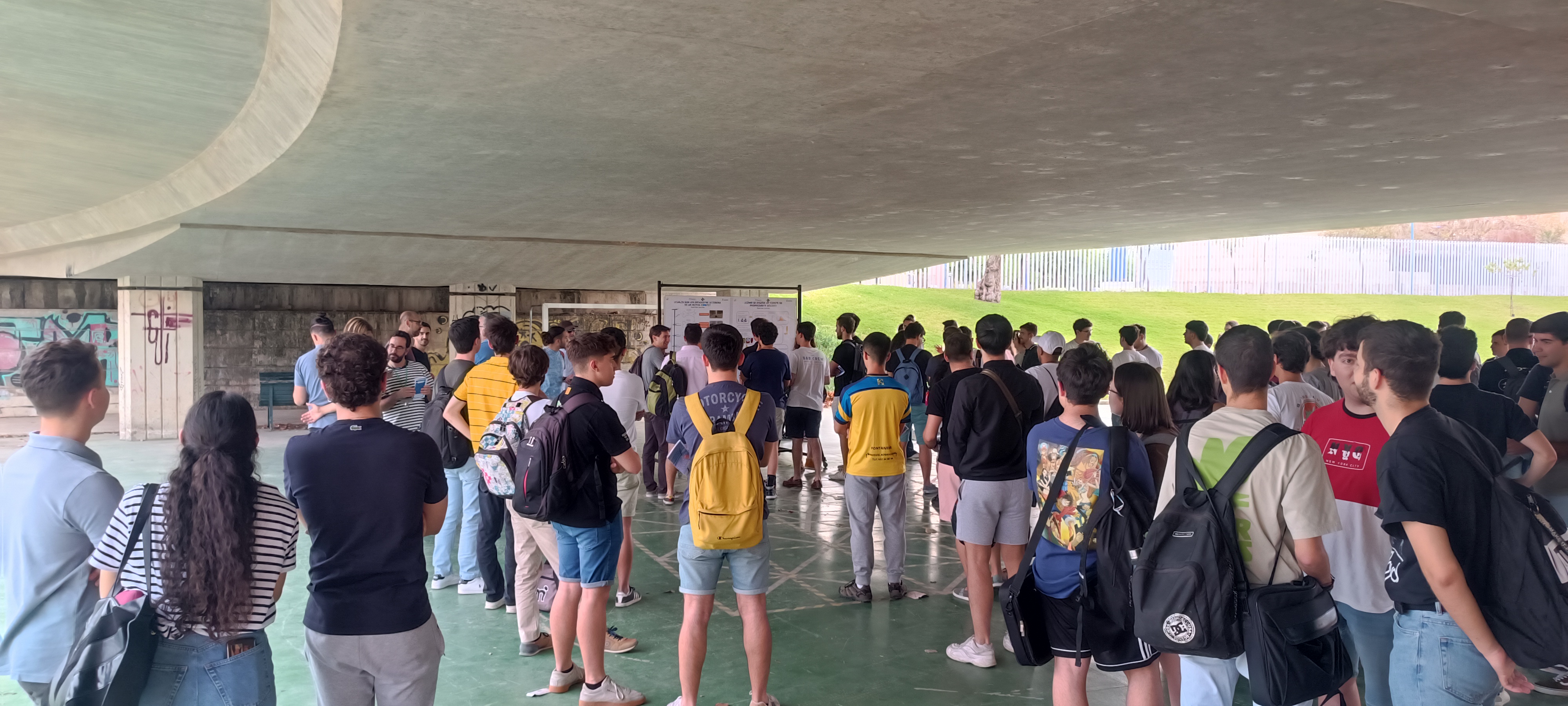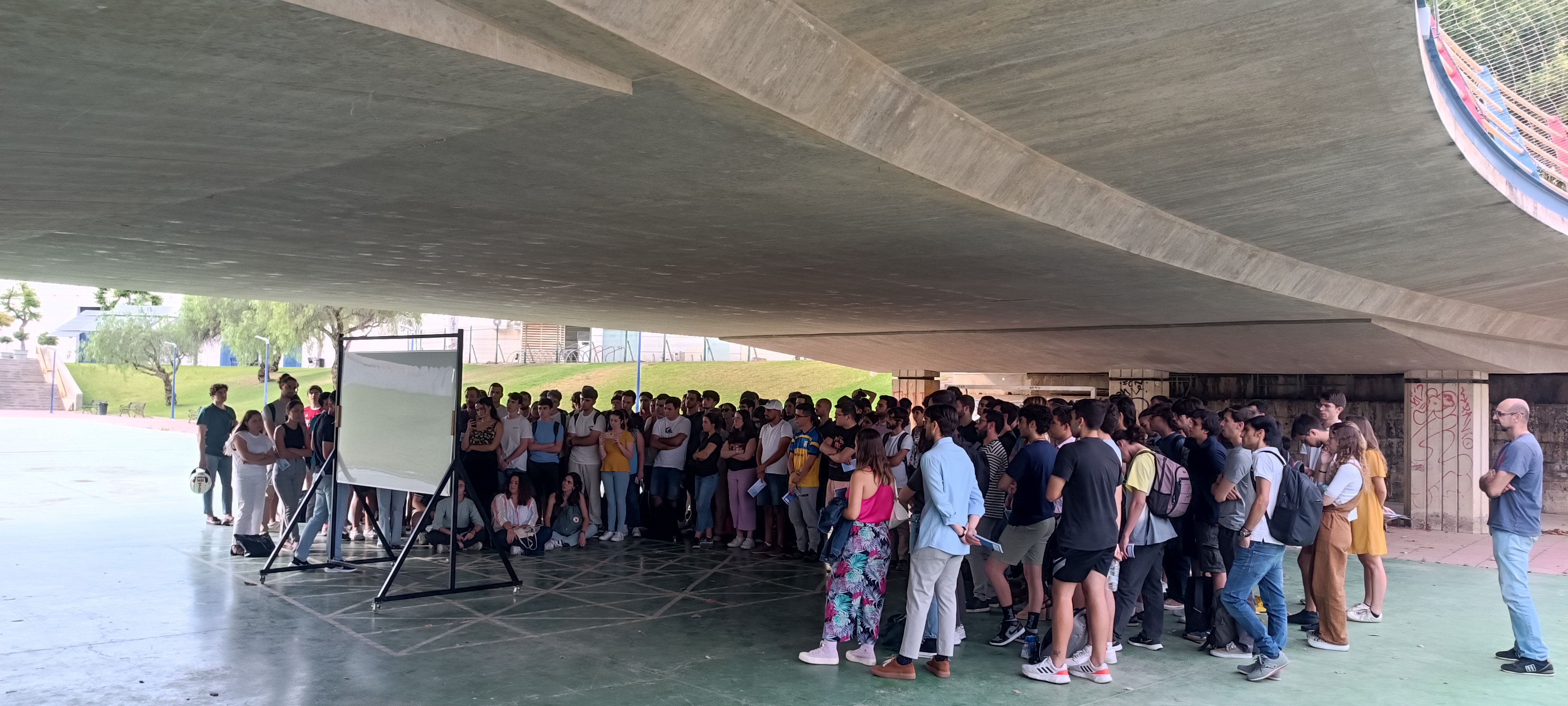Real bench test with J222 class rocket engine
The test on a real bench with a motor was successful in attendance of students, bringing together more than 150 people
On May 16, a real bench test of a 260kg thrust rocket motor took place on the basketball courts of the ETSi of the University of Seville, carried out by Álvaro Sáez, a former student of the Degree in Aerospace Engineering. of School, along with his father, Jesús Sáez.
This day was accompanied by notions about rocket design and manufacturing,
brief nozzle theory, solid propellant characterization experiment, and finally a final bench test. The test is within the test campaign to improve the propulsion system of the NAOS project that Álvaro and Jesús have been developing since 2015, which culminated in the launch of the NAOS in May 2021.
The bench test carried out at the Higher Technical School of Engineering is a crucial part of the battery of tests scheduled for the NAOS .
This is the most ambitious project carried out by Coheteros. It is a rocket more than 2 meters high and weighing 7 kg with the capacity to reach an apogee of 3 km high and be reusable. To make this possible, it has a recovery system made up of a parachute and an ejection system programmed with an electronic delay. Additionally, it integrates a flight data acquisition system and another tracking and telemetry system that receives the rocket's coordinates at all times via GPS and sends them to ground reception stations via telemetry with LoRa modulation. Finally, it adapts a high-resolution onboard camera, also very useful for acquiring data on the trajectory, actions and stages of the flight. All of these systems are designed, developed and manufactured from scratch by rocketeers and have been validated with functional tests. Likewise, the launch pad is structurally designed to support the rocket's takeoff loads and ensure that the flight is stable from departure.
The real bench test with an engine like the one carried out at the ETSI aims to validate the following design aspects:
- Similarity between the real and theoretical Thrust-Time curve obtained in the simulations.
- Validate the viability of the new engine propellant grain inhibition system. This inhibition is manufactured by 3D printing in ABS, and greatly facilitates the manufacturing process of propellant grains, allowing shipments to be made more frequently.
- Analyze and study the repeatability of bench tests. In total, 4 bench tests have been carried out with the same propellant load as the one exhibited at the school. All of them show Thrust-Time curves that are very similar to each other, evidencing the reliability and trust in the manufacturing process.
- Characterization of the effect of erosive combustion, a determining factor in the CATOs (Catastrophe At Take Off) suffered in previous tests, with the aim of applying corrective measures to eliminate or mitigate said effect.
- The test has also been decisive in obtaining real data that allows us to more accurately predict the actions that NAOS will carry out in its imminent launch.
However, this test has not only been useful for the designers, but also for the multitude of students and future engineers who attended the event, since during the exhibition they were able to verify that the theory and knowledge acquired during the studies were vital for the development of the rocket engine. To this end, several of the theoretical explanations were accompanied by real evidence experienced live during the event. However, they were also able to share that on many occasions theory is not capable of correctly predicting reality, highlighting the importance of functional tests to validate designs.
But perhaps the most striking thing about the meeting was the motivation, attention and interest that the students showed at all times, highlighting the good atmosphere created at all times.


